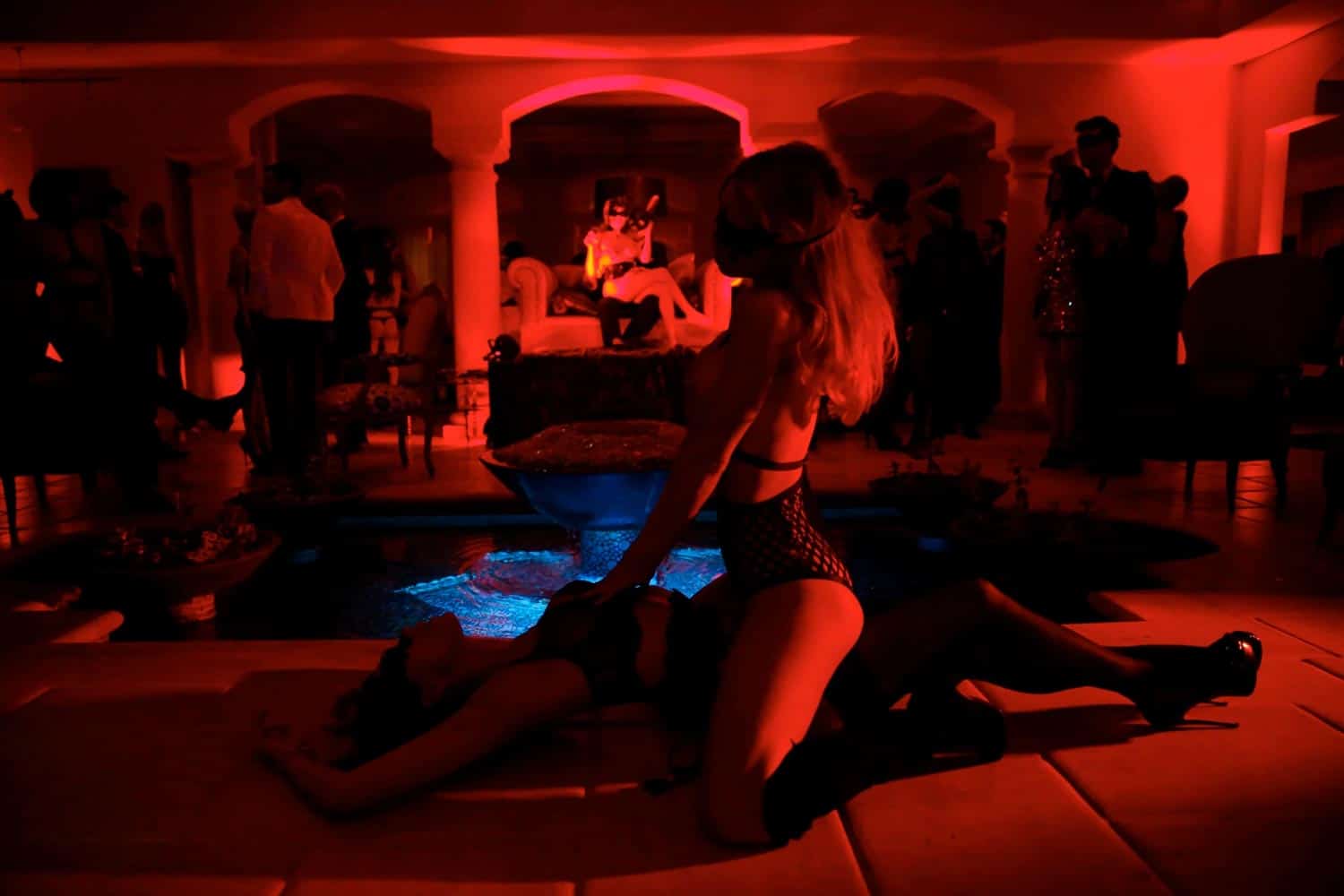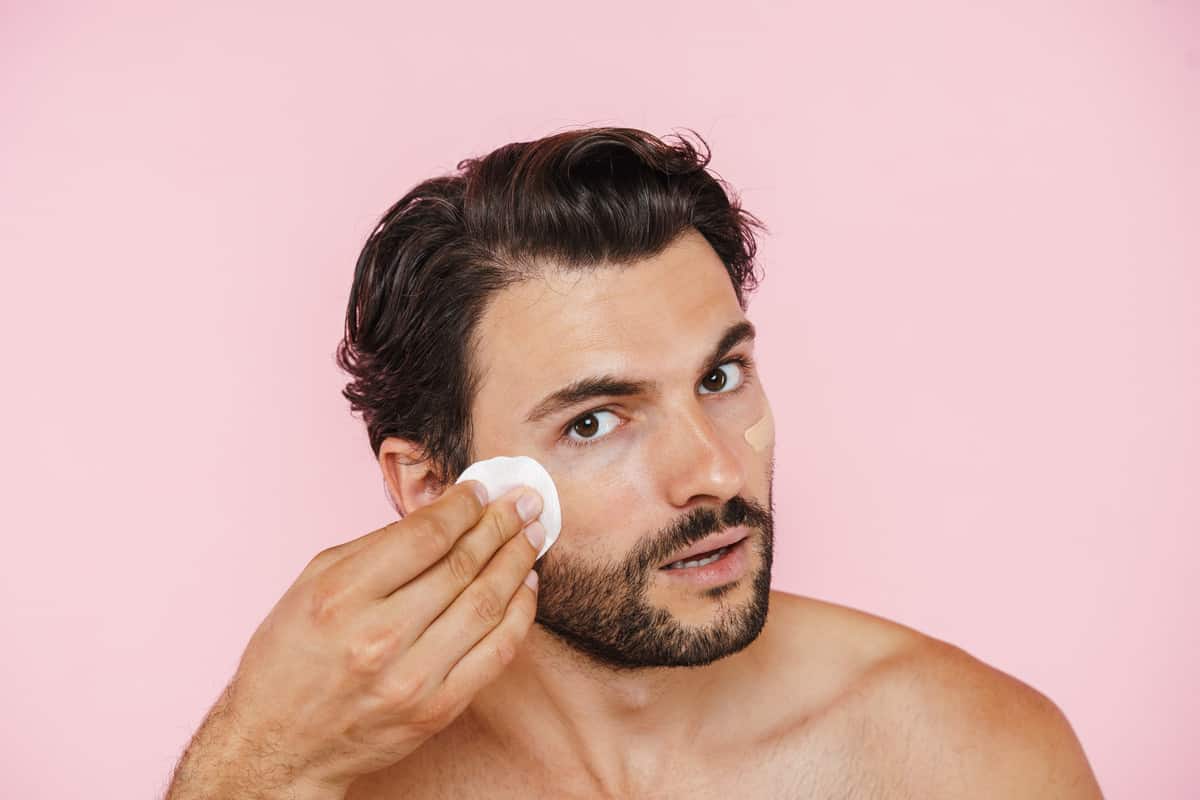
Eye shapes and sizes vary from person to person, each with its own unique appeal.
One eye shape that has become incredibly popular, especially for men, is called “Hunter Eyes”.
Think Robert Pattinson or Bruce Wayne , with their intense gaze and brooding charm.
Hunter Eyes are characterized by their sharp, piercing look that seems to delve into the depths of one’s soul. They possess an undeniable magnetism, drawing others in like moths to a flame, and they often give the illusion of trustworthiness and strong leadership skills.
Not only that, men who possess Hunter Eyes have a far higher success rate in seducing women.
These eyes are often almond-shaped, with a slight upward tilt at the outer corners that gives them an exotic allure. The lids may be heavy, lending an air of mystery and intensity to the already captivating gaze.
The eyebrows accompanying Hunter Eyes are often well-defined and arch elegantly, further enhancing their striking appearance.
But it is not just the shape that defines Hunter Eyes; it is also their color. Shades of deep brown or hazel dominate these captivating orbs, boasting flecks of gold or green that shimmer
If you’re interested in achieving this distinctive eye shape naturally, there are a few factors to consider and techniques to try. In this article, we’ll explore the genetic factors that determine eye shape and provide some practical tips on how to achieve Hunter eyes naturally.
We've done the homework
See our picks for the best sites of 2023
😈 Best Hookup Sites
🎥 Best Adult Webcams
⛓️ Best BDSM Dating Sites
🧍♀️🧍🧍♀️ Best Threesome Sites
🤐 Best For Discreet Affairs
What are Hunter Eyes?
To understand what Hunter Eyes are, let’s look at hunter eyes vs prey eyes. Hunter eyes have more compact and square orbital bones surrounding the eye.
These deeper-set and square orbital bones create a fierce and predatory look. Additionally, Hunter eyes have a thin layer of skin that folds over the eye, giving it a sleek, wider, and more rectangular appearance.
On the other hand, prey eyes have bigger, rounder, and more shallow eye orbitals, which results in more eyelid exposure and a surprise or scared look.
Another significant factor in determining eye shape is the maxilla, the bone located in the mid-face area.
If you have a flatter and underdeveloped maxilla, you may experience less support around your eyes, leading to a consistent appearance of eye bags and a tired look.
Conversely, a more forward-developed maxilla provides better support under and around the eyes, resulting in the Hunter eye look. Hunter eyes also tend to have a positive canthal tilt, where the eyes tilt down slightly inwards, resembling the gaze of a predator.
Understanding Your Eye Shape
While some individuals naturally have Hunter eyes, others may fall somewhere in between different eye shapes.
For example, relaxing the eyebrows can help achieve a Hunter eye look for some people, but it may not fold all the way down into the eye.
Others may have one eye that folds and the other with some eyelid exposure. It’s important to note that eye shapes can vary, and you may fall into a unique category.
Don’t Do This to Achieve Hunter Eyes
It is essential to understand what does and does not work when trying to attain Hunter eyes.
Many people have been discussing a practice known as “bone smashing”.
This involves using a hard object to create micro-damages to the eye bones, with the hope that they will calcify and grow back with more significant bone structure. However, this method is highly discouraged, as it carries the risk of damaging the eyes, potentially leading to blindness or fractures in the face.
You also cannot change your genetic blueprint. Eye shape, like many other physical traits, is genetically determined.
Our ancestors come from various regions worldwide, adding to the unique genetic mix that contributes to our eye shape. Therefore, it’s important to keep in mind that you may be limited in the changes you can make to your eye shape.
It’s Your Attitude Too
Even if you don’t possess Hunter Eyes in their physical form, the term “Hunter Eyes” encapsulates more than just a mere anatomical description.
It encompasses an attitude, a determination, and a relentless pursuit of one’s goals. Act as if you are the hunter. You are the wolf. Visualize like a boss and while you may not physically
Those with Hunter Eyes possess an unwavering focus, an intensity that radiates from their gaze. It’s as if they can see through obstacles and setbacks, undeterred by the challenges that lie in their path.
Natural Techniques to Achieve Hunter Eyes
Although you can’t change your genetics, there are some natural techniques you can try to achieve Hunter eyes. Here are a few options to consider:
1. Start Mewing
If you are under the age of 25, you can try mewing. Mewing is a practice introduced by British orthodontist Dr. Mike Mew.
The idea behind mewing is to maintain proper tongue posture by pressing the tongue against the roof of the mouth consistently.
This constant pressure against the maxilla can promote forward growth and better facial structure, including support for the under and side eyes.
Starting mewing from a young age is crucial because facial fissures solidify over time, making it less likely to change the face structure as you get older.
2. Chewing Gum
Mewing can also help achieve a better jawline and jaw structure. Alongside mewing, you can build your masseter muscle, responsible for chewing, by chewing gum.
Consider trying a gum specifically designed for jawline exercises, as it can provide a more intense workout for your jaw and help define your jawline.
3. Practice Relaxed Facial Expressions
Another simple technique is to consistently practice relaxed facial expressions. Instead of walking around with raised eyebrows, try to relax them by gently pushing them down.
This relaxation helps the skin around your eyes compress and relax, allowing it to fold over onto your eyes if you have the available skin for that.
Although individuals with significant eyelid exposure may not experience noticeable changes, practicing relaxed facial expressions can help train your eyebrows to relax more often.
4. Eyelid Pulling
Some people have reported success with a technique called eyelid pulling. The theory suggests that gently tugging on your eyelids can stretch the eyelid skin, increasing its elasticity and allowing for more excess eyelid to fold over the eyes.
However, it’s important to note that this technique lacks extensive research, so proceed with caution if you choose to try it.
Surgical Options
If you’re considering a more drastic approach to achieve Hunter eyes, there are surgical options available. Although there isn’t a specific hooded eye surgery, some individuals opt for almond eye surgery to reduce eyelid exposure and create a single-fold eyelid appearance.
Additionally, brow Ridge filler is a procedure where filler is injected into a flat eyebrow Ridge to create a more prominent appearance, potentially aiding in eyelid support.
It’s crucial to consult with a qualified and experienced plastic surgeon to discuss the suitability of these surgical options and understand the potential risks involved.
Try Makeup
For those who prefer less invasive methods, skillful makeup application can work wonders in creating the illusion of Hunter eyes. Yes, we’re talking about makeup for men. Get over it.
By skillfully manipulating colors and shadows, one can transform their eye shape to mimic the desired almond shape.
A neutral eyeshadow base should be applied to the entire eyelid, followed by a slightly darker shade in the crease to create depth.
Final Thoughts
Achieving Hunter eyes naturally may require a combination of techniques.
While bone smashing and radically altering your genetics does not work, techniques such as mewing, practicing relaxed facial expressions, and chewing gum can potentially help you achieve a more desirable eye shape.
Remember, everyone’s genetics are unique, so the changes you can make to your eye shape will vary.
Embrace your individuality while exploring these techniques and remembers that in our quest for aesthetic perfection, it is crucial to differentiate between what is realistic and what resides in the realm of fantasy.













